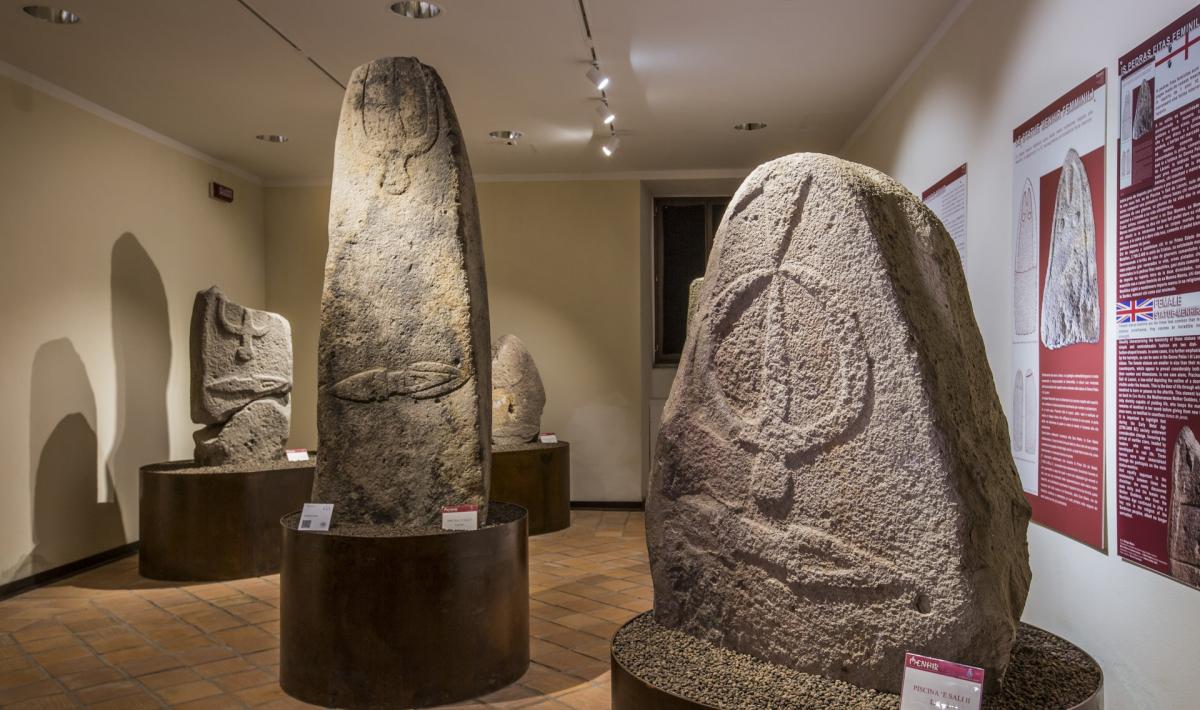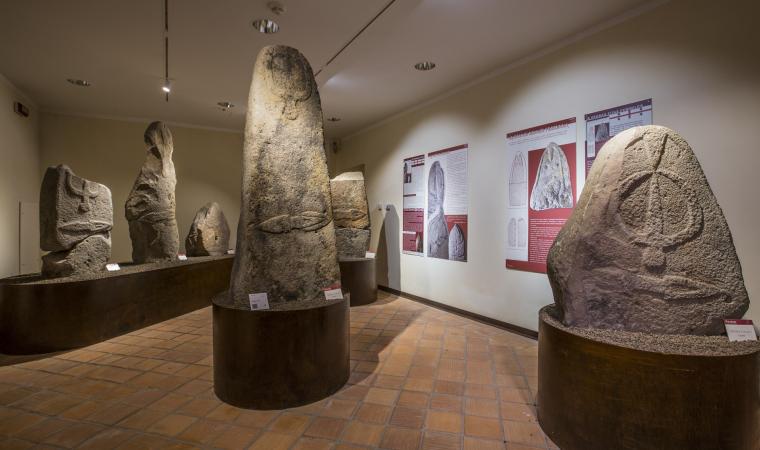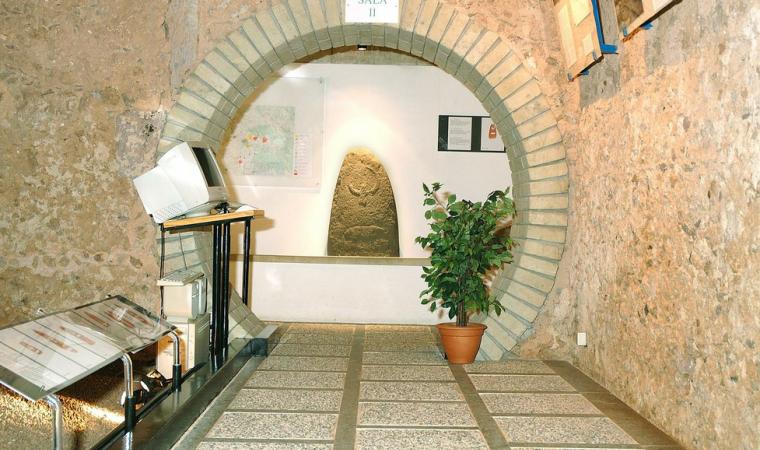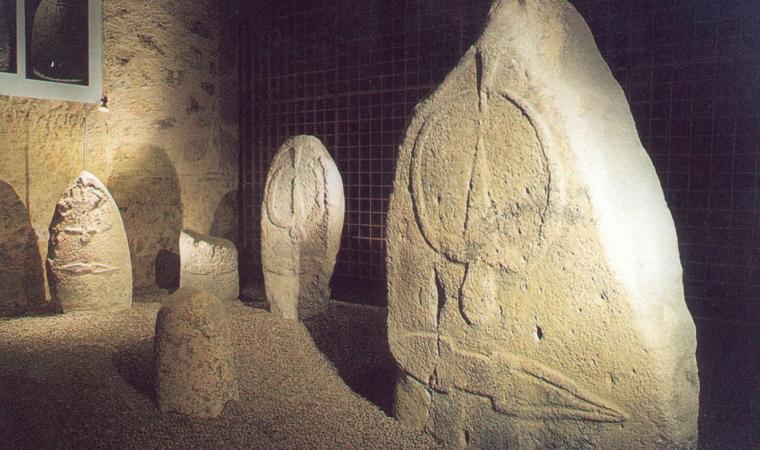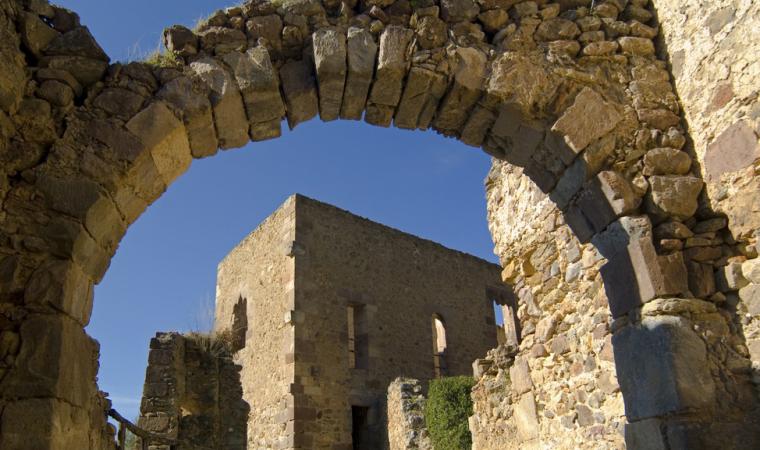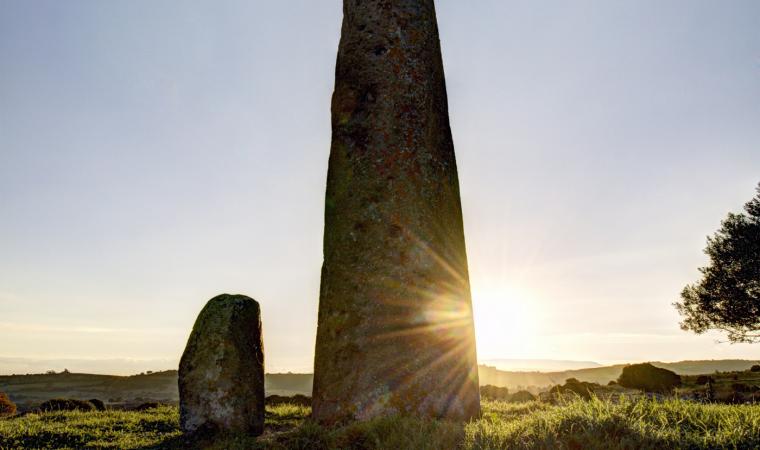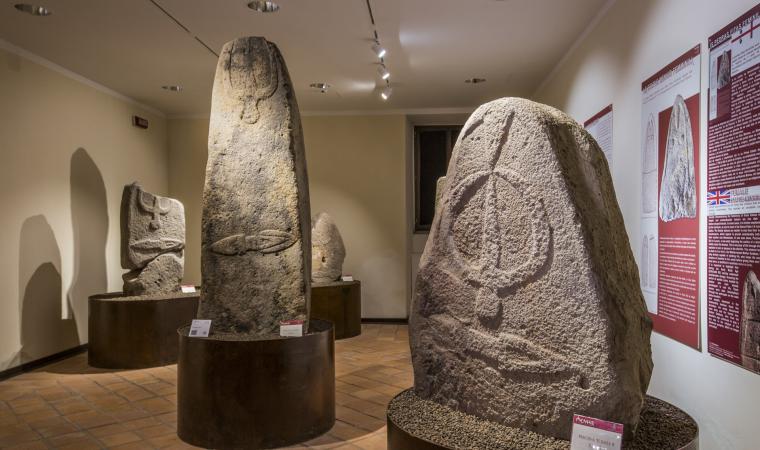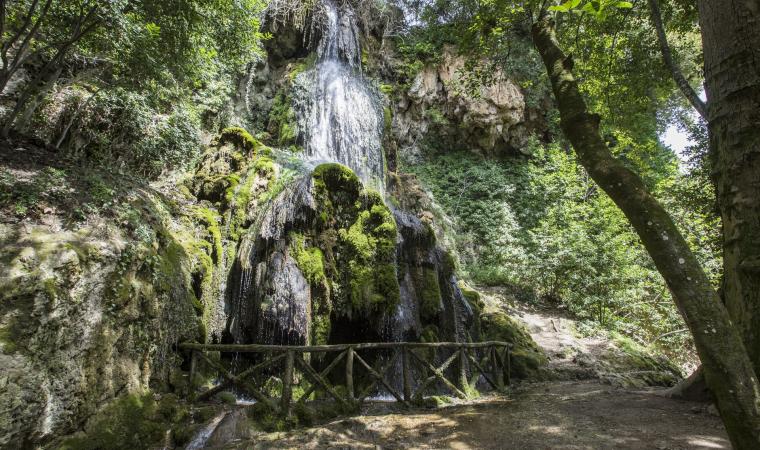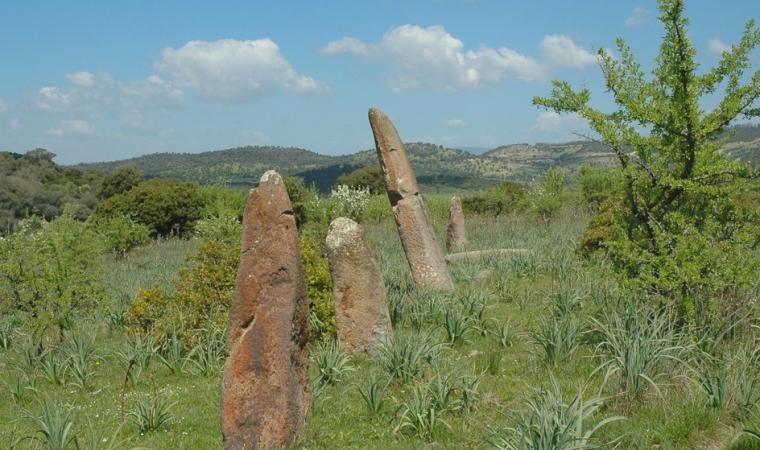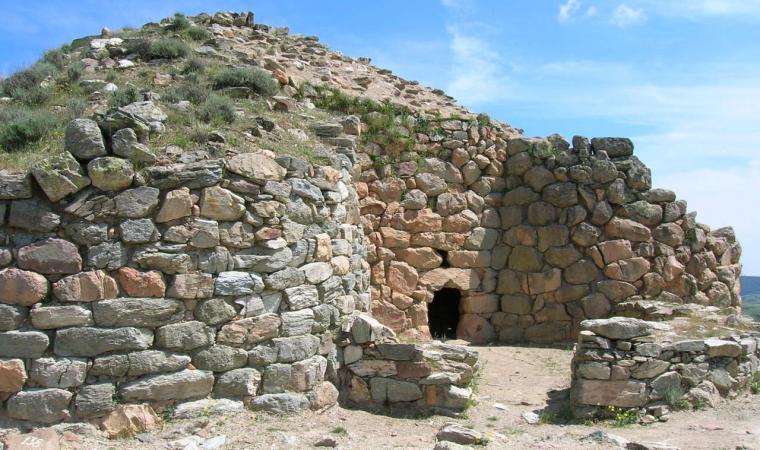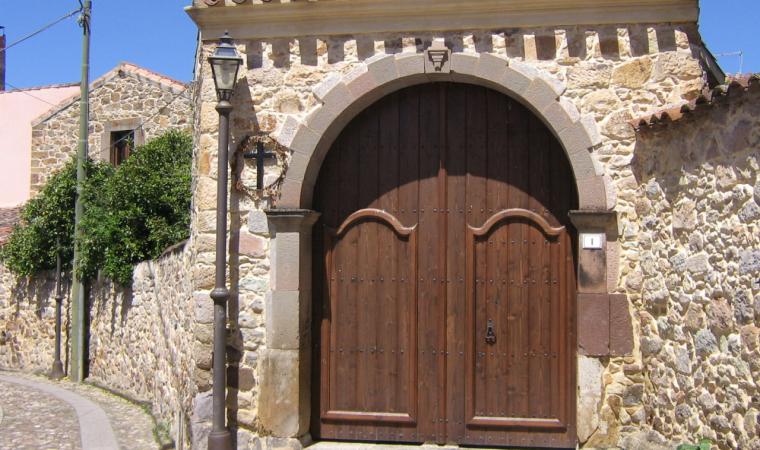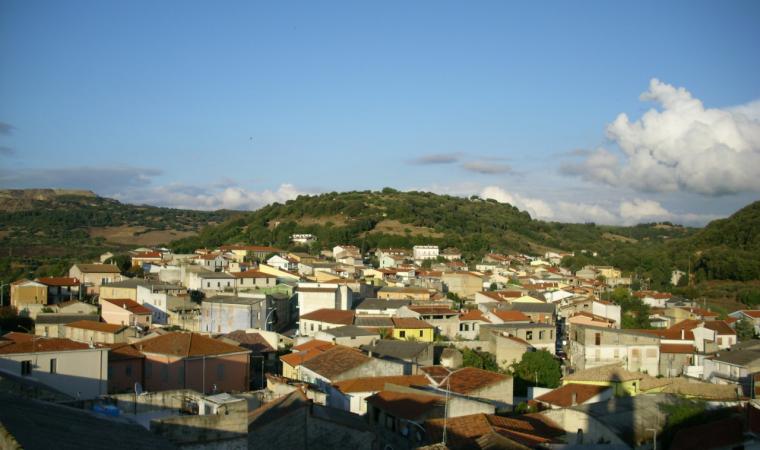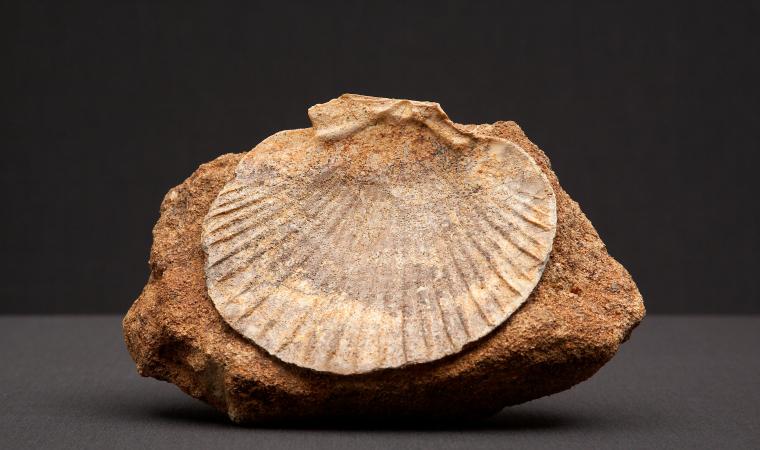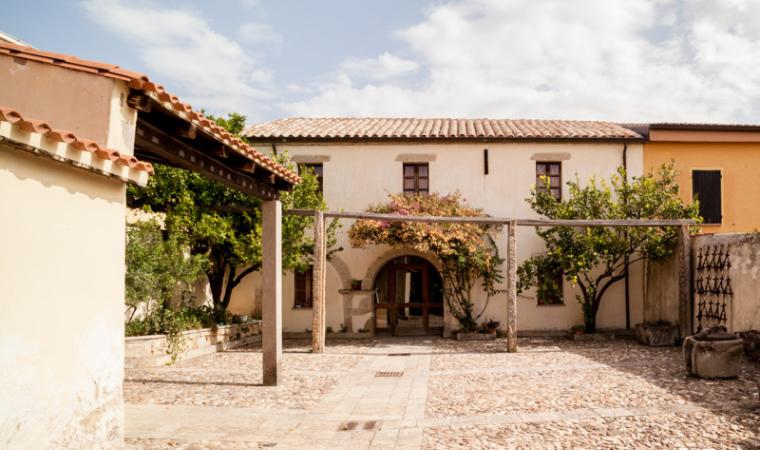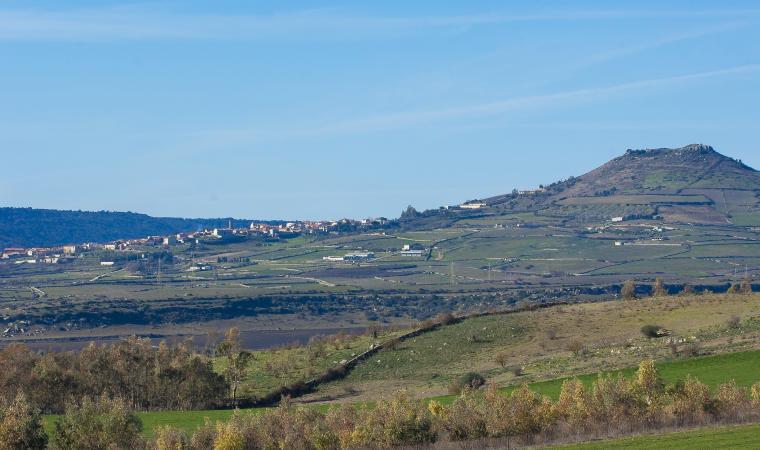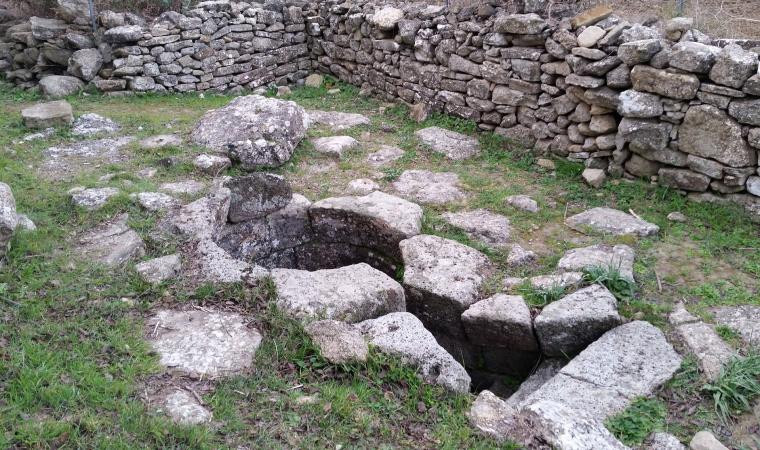Fascinating and of great scientific value, the exhibition embellishes the village-jewel of Laconi. The museum of prehistoric statuary in Sardinia hosts a unique collection of 40 monoliths-menhirs (perdas fittas in Sardinian), a number of giants, attesting to the typological development of anthropomorphic statues in the 3rd millennium BC and accompanying visitors on a discovery of figurative and symbolic expressions of the first age of metals on the Island and in the European megalithic tradition. The museum itinerary unfurls over two floors of the 19th-century Aymerich building, a stately neoclassical home in the centre of the town. Ten rooms, with multimedia support devices and panels, are dedicated to prehistoric statues of Sarcidano and neighbouring territories. The eleventh room displays ceramic, metal and stone finds (from ancient Neolithic to ancient Bronze), coming from megalithic sites such as the Corte Noa dolmen and Masone Perdu tomb.
The 40 menhirs, carved in trachyte, are of three types: proto-anthropomorphic, of ogival shape and void of depictions, anthropomorphic ungendered figures, with somatic facial features, and statues-menhirs rich in details that distinguish the sex. The masculine ones have arched eyebrows and a pronounced nose, in addition to the symbolism of the ‘overturned’ (linked to the worship of the dead) and of the double dagger (a sign of strength and power). Perhaps they were statues dedicated to tribal chiefs or warriors who had performed marvellous deeds. The smaller female ones have conical or flat chests. In some cases, the hairstyle is noteworthy, such as in the Genna Palàu I statue. Quite particular is the statue Piscina ‘e Sali III, with a low relief under the bust that is the frame of a door, through which one enters into the world or has access to the otherworldly life, a motif attributable to the Mediterranean Mother Goddess. The most famous findings are those of Masone Perdu (an alignment of seven menhirs), Perda Iddocca (eight monoliths) and Pranu Maore (six statues). Other specimens of the museum, which are distinguished by an iconography differing from that of the Sarcidan menhirs, three coming from the site of Pranu Orisa in Allai, where there is a large multiform group, from Paule Lutùrru of Samugheo, where the site of Cuccuru e Lai has resulted in other very interesting fragments, and from the territory of Villa Sant’Antonio, a village famous for its statues-menhirs. After visiting the menhir museum, the Bandiere Arancione village of Laconi and the devotion of its community to Saint Ignatius - the house of his birth, museum of sacred art and parish dedicated to him (15th century) are all stops on an intense journey. To be surrounded amongst greenery, there is Parco Aymerich, a short distance from the centre. This garden of holm oaks and exotic plants is interspersed with caves, waterfalls and ponds, surrounding the remnants of an 11th-12th century castle.

